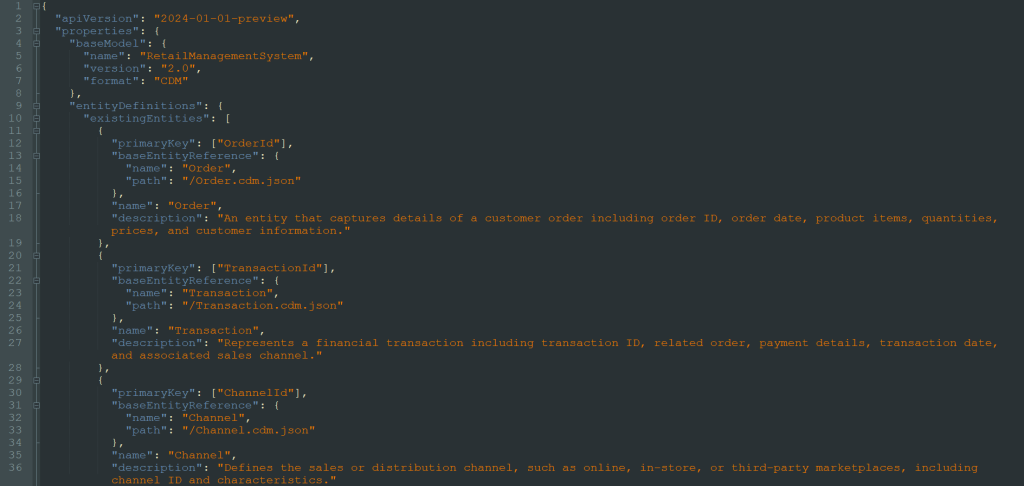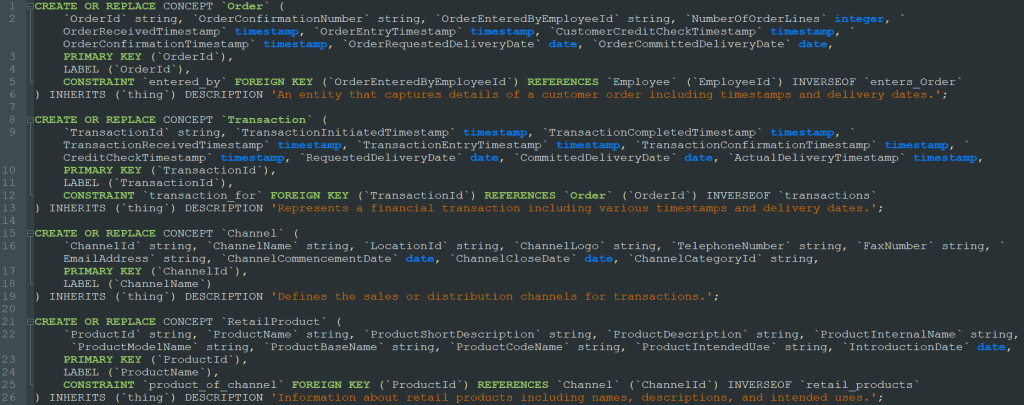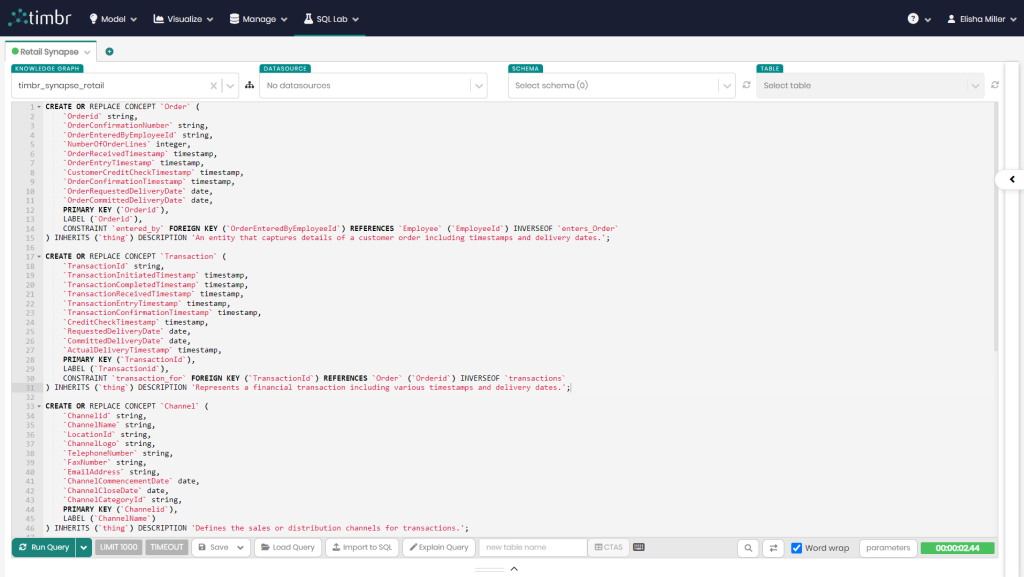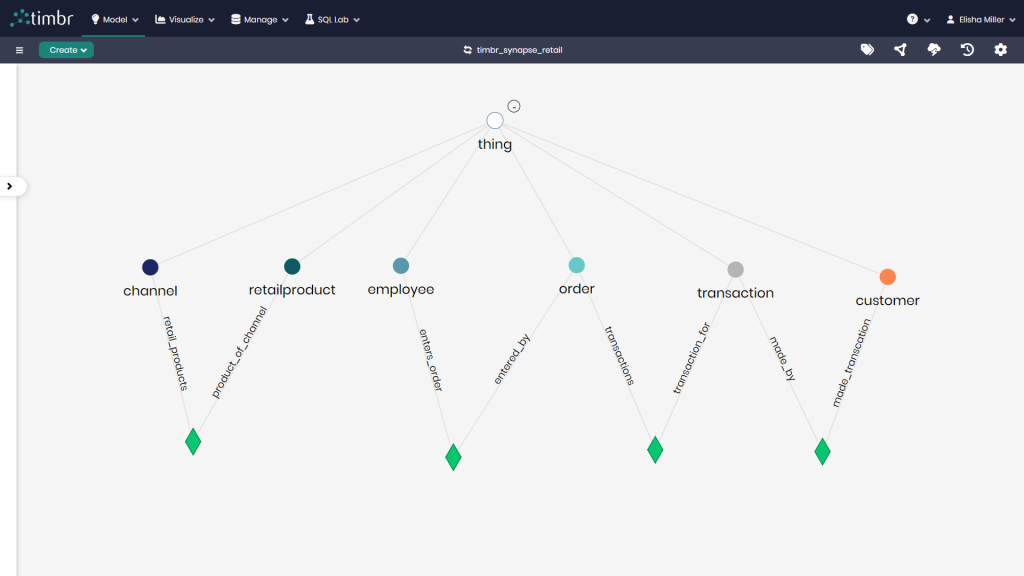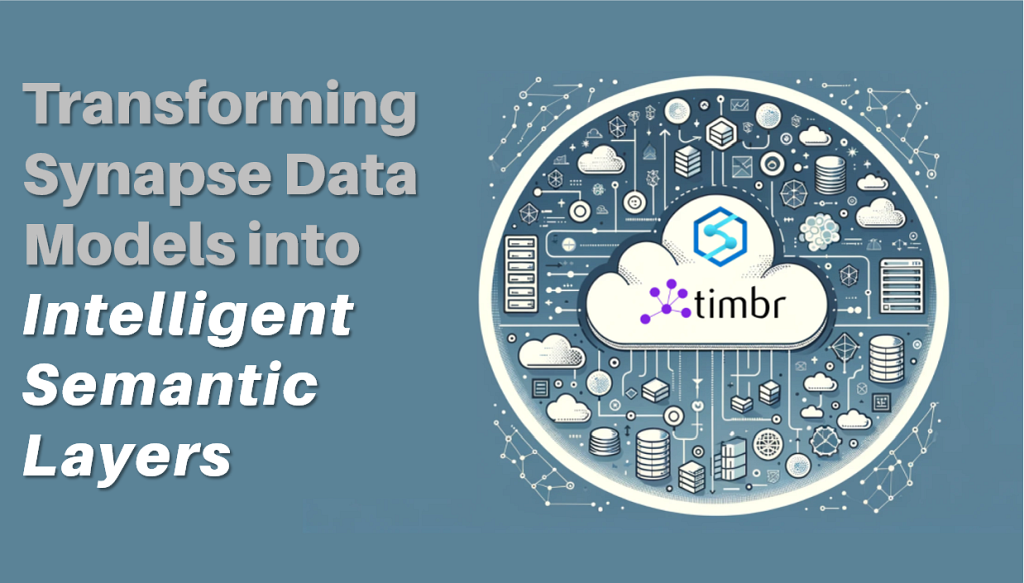
Introduction
Microsoft Synapse Common Data Models (CDM) and Industry Data Models (IDMs) enable data product interoperability. Both model types help users organize the way data is shaped and shared and ensure to keep data understandable.
Transforming CDMs and IDMs into Timbr intelligent semantic layers offers several advantages, particularly in scenarios where there’s a need for greater abstraction, flexibility, and semantic richness in data management and integration:
- Abstraction of Data Sources: Timbr abstracts the complexities of underlying data sources, providing a unified view of data across heterogeneous systems, databases, and formats. This abstraction simplifies data access and integration for end-users, shielding them from the intricacies of underlying data structures and technologies. In contrast, CDMs/IDMs are typically tied to specific data schemas and may require additional effort to integrate data from diverse sources.
- Semantic Enrichment: Timbr enriches data with semantic metadata, such as relationships, classifications, and descriptions, to improve data understanding, discovery, and interpretation. This semantic richness enables more sophisticated data analyses, search capabilities, and decision-making processes compared to traditional industry data models.
- Flexible Data Representation: Timbr provides a flexible data representation framework that can accommodate diverse data structures, schemas, and formats. It supports dynamic mappings and transformations between different data representations, allowing for agile data modeling and adaptation to changing business requirements. This flexibility is particularly valuable in environments with evolving data sources, schemas, and integration needs.
- Interoperability and Integration: Timbr promotes interoperability and seamless integration across disparate data sources and systems by providing a common semantic framework for data exchange and interpretation. It facilitates semantic mapping and alignment between heterogeneous data representations, enabling data harmonization and consistency across organizational boundaries. This interoperability is essential for enabling data-driven insights and collaboration in complex, distributed environments.
- Short, simplified SQL queries: Timbr no-JOINs SQL leverages the power of semantic relationships to accelerate the delivery of reports and analytics.
- Advanced Analytics and Discovery: Timbr enables advanced analytics, data mining, and knowledge discovery by representing data as a network of semantic relationships. It supports recommendation systems, and inference-based reasoning, allowing users to uncover hidden patterns, correlations, and insights within the data. This capability enhances decision-making processes and supports innovation and discovery in various domains.
- Future-Proofing: Timbr provides a future-proof foundation for data management and integration by decoupling data representation from specific technologies or implementations. It enables organizations to adapt to evolving data sources, standards, and technologies while preserving the semantic integrity and interoperability of their data assets. This future-proofing capability reduces the risk of data silos, vendor lock-in, and obsolescence over time.
Unlock the Full potential of Your Data
How Timbr Transforms Synapse Data Models into Intelligent Semantic Layers
Timbr enables the transformation of Synapse data models into intelligent semantic layers in just a few simple steps.
Step 1: Exporting the Model Into a JSON File
We’ll use as an example a retail company using the Synapse Retail Model which represents data on customer interactions, sales transactions, inventory levels, and supplier information, and looking to optimize our inventory management and customer engagement.
To do so, we will begin by exporting our Retail Model into a JSON file, to allow smooth translation into Timbr’s SQL DDL statements.
Step 2: Converting the Synapse concepts from JSON to Timbr SQL DDL statements
In this step, we translate the exported Synapse Retail Model’s JSON data into Timbr’s SQL DDL format. This involves identifying key data elements—like customer details, transaction records, and inventory information—and structuring them into SQL statements that define the schema of our semantic model in Timbr. This transformation is essential for constructing an intuitive, queryable semantic layer that accurately reflects our retail operations.
Step 3: Running the query of converted SQL DDL statements to create the Knowledge Graph
Once the elements are chosen from the Synapse concepts JSON file and converted into Timbr SQL DDL statements, These statements are then entered into the query box in Timbr’s SQL Editor. All that’s needed now is to select the knowledge graph name and click Run Query. In a matter of seconds, the SQL Statements are transformed into our new Knowledge Graph.
At this point, we can begin querying our knowledge graph or instead choose to enrich it beyond the core concepts. With Timbr, adjusting your knowledge graph becomes straightforward, allowing for easy modifications, including the addition or removal of concepts, properties, and relationships. It facilitates integrating data sources from various locations or databases, thanks to its virtual semantic layer capabilities. This flexibility enhances the ease of working with data models, enabling you to tailor the semantic layer to your specific analytical needs and insights at any time.
In Conclusion
Our hypothetical retail company, through this process, was able to gain a competitive edge by transforming its model into a semantic layer to optimize operations.
The transformation of Synapse data models into semantic layers using Timbr not only democratizes data access across the organization but also significantly enhances analytical capabilities. This journey from raw data models to enriched semantic layers underscores the evolving landscape of data analytics, where accessibility and sophistication go hand in hand to empower businesses in their decision-making processes.
Ready to unlock the full potential of your data with Timbr and Synapse?
Contact us today to start your journey towards a more sophisticated and accessible data analytics landscape.
Are you using your data strategically?
Timbr virtually transforms existing databases into semantic SQL knowledge graphs with inference and graph capabilities, so data consumers can deliver fast answers and unique insights with less effort.
With Timbr, your organization can join the knowledge revolution.

